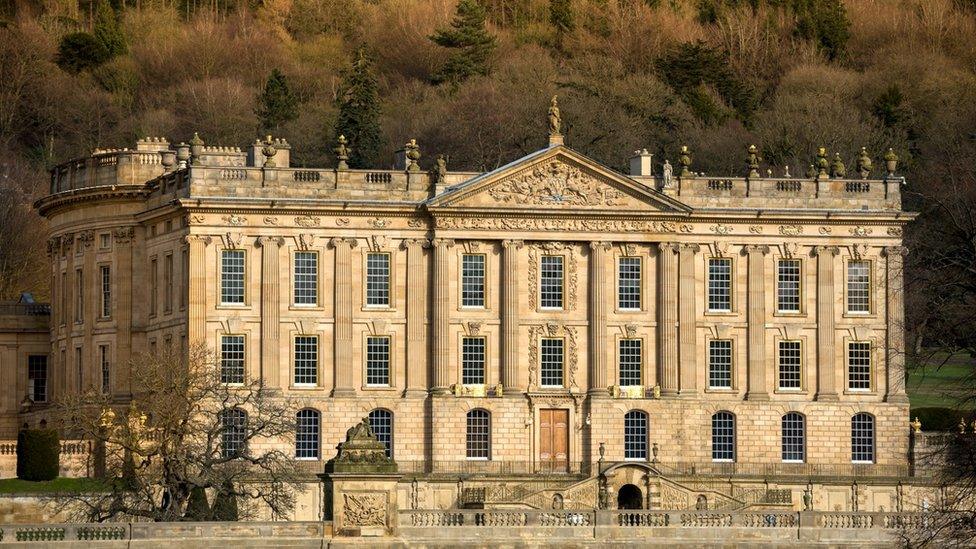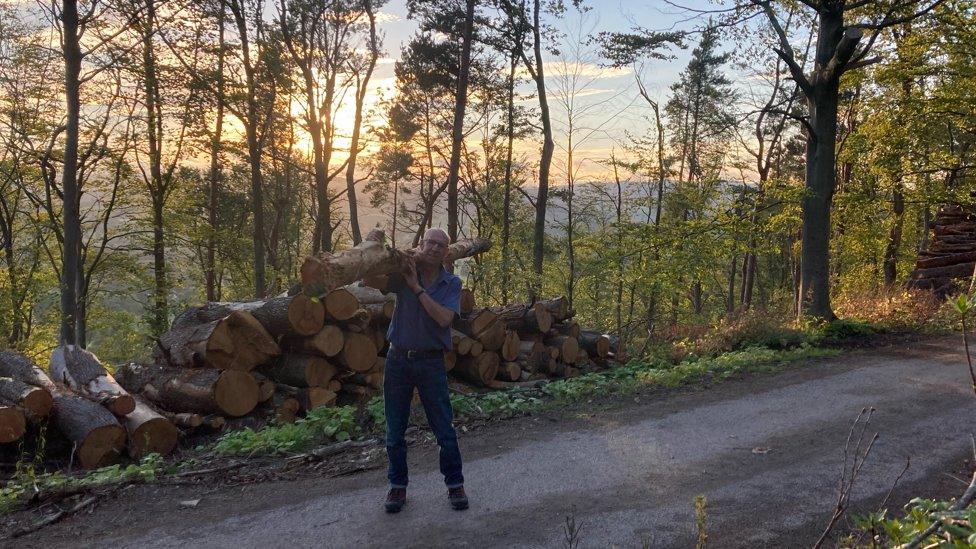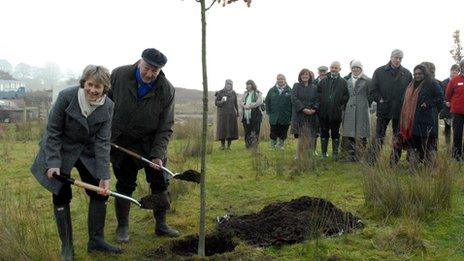Chatsworth to restore 25,000 trees to landscape
- Published

The forestry team hopes to create a more diverse woodland
A major replanting of woodland behind a stately home is taking place to restore thousands of trees to the landscape.
The Forestry team at Chatsworth is planting about 25,000 new trees to create a more diverse woodland at Stand Wood, on the estate.
The estate said the aim was to grow a much wider variety of species including oak, hornbeam, birch, alder, sycamore and yew trees across its 383 acres.
All of the saplings have been grown in UK nurseries.
'Mature woodland'
Stand Wood lies on the steep hill behind Chatsworth House.
The estate said most of the tree canopy was expected to be above head height in the next 10-15 years.
John Everitt, forestry manager at Chatsworth said: "We have records showing the woodland has been planted and replanted many times over the centuries.
"It's part of the natural cycle with older trees and plants replaced with new growth - the trees we have recently replanted will soon grow to create a mature woodland again."

The planting will help replace recent felling due to the Phytophthora outbreak
He said one of the estate's retired foresters, Brian Gilbert, had shown him some photographs of him working at Stand Wood in the 1960s.
"One particular photo caught my attention and shows a young Brian with a piece of pine pit wood slung over his shoulder, probably for use in the collieries that were such an important part of the local economy at the time," he said.
"In the background of the picture are young larch, beech, oak and sweet chestnut trees planted following wartime felling. These are the same larch and sweet chestnut trees which we have recently had to fell as mature trees due to the Phytophthora outbreak."

Retired forester Brian Gilbert in an archive photograph showing the woodland as it used to be
The replanting of affected areas with a greater mixture of species will help make Stand Wood more disease-resistant as it replaces trees which had to be felled after approximately 5,500 trees (3500 tonnes of wood) became infected with the deadly water mould, Phytophthora Ramorum.
The mould affects bark and foliage, usually leads to death and particularly damages larch as well as some other trees and plants.

Follow BBC East Midlands on Facebook, external, on Twitter, external, or on Instagram, external. Send your story ideas to eastmidsnews@bbc.co.uk, external.
Related topics
- Published17 November 2012
